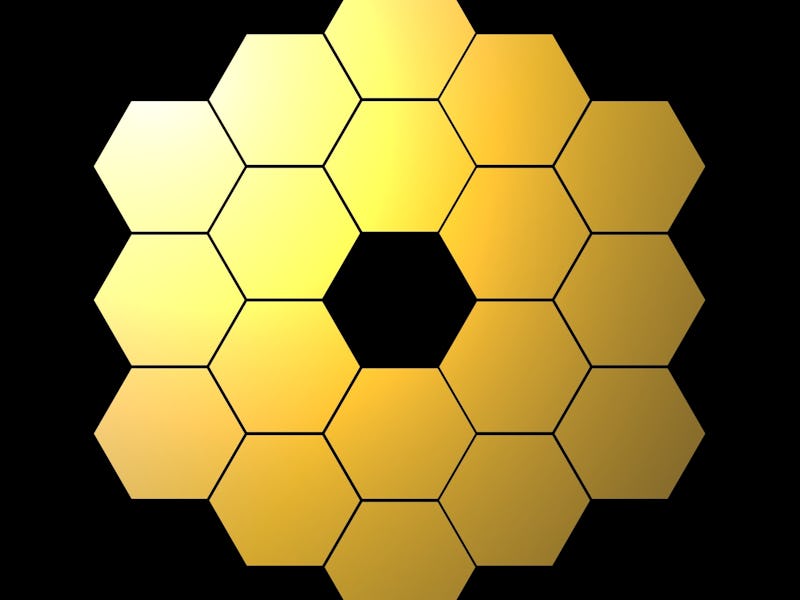Fresh James Webb Space Telescope images are here — and they will blow you away
Plus: If you love reptiles, you might not like this new study.

I’m running out of words to talk about how I feel every time I see a fresh James Webb Space Telescope image. “Stunning,” “dazzling,” “luminescent,” “radiant,” “jaw-dropping,” “just, seriously, wow.” I’m going to need to dive into my thesaurus when the telescope finally starts publishing actual scientific images based on the latest drop.
You can see them all in today’s newsletter and so much more. Happy Friday. As Dora the Explorer says, we did it. Got a great synonym for dazzling? Hit ‘reply’ to this email and help me out. In the meantime, prepare to drop that jaw.
This is an adapted version of the Inverse Daily newsletter for Friday, April 29, 2022. Subscribe for free and learn something new every day.
James Webb Space Telescope, you’ve done it again.
WEBB TELESCOPE CAPTURES 5 DIFFERENT, DAZZLING VIEWS OF A NEARBY GALAXY
It only took 25 years of development, 17 years of construction, eight launch delays, and five months of alignments, but finally, the James Webb Space Telescope is almost ready for prime time. New photos released by the European Space Agency (ESA) — and an accompanying video from NASA — show images of stars taken by a fully aligned space telescope, instruments, and all.
The image shows snapshots from each of Webb’s three imaging instruments, plus its spectrograph and guidance sensor. The images show a field of stars in the Large Magellanic Cloud (LMC), a galaxy near the Milky Way about 158,000 light-years away. If it orbits our galaxy, it would be, by far, the largest satellite galaxy. But there’s a chance it’s just passing through or slowly merging with our galaxy.
Now that the imaging instruments are properly aligned, NASA and its partners will begin commissioning several science instruments. These are components within the imaging instruments that can do things like filter certain kinds of light, adjust the cameras to specific customizations, or apply a particular lens. That could take a few months, so hold your breath.
Your favorite reptile could be extinct soon.
1 in 5 reptile species is now endangered
An assessment finds that after looking at more than 10,000 reptile species worldwide, 21 percent of them are at risk of extinction.
The silver lining, according to Bruce Young, co-author and chief zoologist at NatureServe, a biodiversity conservation organization, is that many of the top threats to reptiles are also top threats to many other plants and animals. He had fretted that reptiles had a unique foe, creating one more problem in the web of conservation.
“That was a big relief, that there isn’t some group of reptiles that are horrendously threatened because we’re doing something all wrong,” Young tells Inverse. Rather than facing an entirely new threat, reptiles stare down the effects of habitat loss, diseases, and removal — which many other critters, including charismatic megafauna, face too.
Industrial waste could help develop new medicine.
Chemists find a way to turn industrial waste into life-saving medicine
The advance could cut back waste while also benefiting the greater good. In a new study published April 27 in the journal Nature, scientists reveal that powerful algorithms may help find ways to recycle such waste products into useful goods such as medication.
Scientists have long sought to devise "circular chemistry" techniques to reuse chemical wastes that might otherwise prove toxic or expensive to store or dispose of. However, even a small number of such wastes can generate millions of possible molecules within a few chemical reactions. Investigating all these potential synthesis routes and finding practical ones to implement has proven extraordinarily challenging.
In the new study, researchers used computers to help synthesize valuable chemicals from waste. They previously used their platform to shed light on the origins of life on ancient Earth.
"What I thought the machine should attack are some real-world problems, those related not to this or than specific synthesis but to a global problem relevant to industry — and hence, the current project was born," study senior author Bartosz Grzybowski, an organic chemist and co-founder of Allchemy in Highland, Indiana, tells Inverse.
Nic Cage, you unsung genius.
BONUS: 15 years ago, Nicolas Cage made the worst sci-fi movie of all time — and also his best
With Next, Nicolas Cage made an over-the-top sci-fi thriller that makes zero sense. And yet, 15 years later, it’s so much fun to watch, Inverse contributor Ryan Britt explains.
In a world of airtight brilliant science fiction, a confidently and hopelessly sloppy future-tense story is fun as hell.
Directed by Lee Tamahori, Next arrived in theaters on April 27, 2007, just a week before Spider-Man 3 gave the world scenes of emo Peter Parker (Tobey Maguire) dancing like a maniac. This was also the same summer that Pirates of the Caribbean: At World's End, Shrek the Third, Harry Potter and the Order of the Phoenix, and the first Michael Bay Transformers took the big screen. But when the best summer blockbuster is arguably a meh Harry Potter movie, you know something weird is happening.
Next was not a summer blockbuster. It was an utter box office flop. Starring Nicolas Cage as Cris Johnson, a man who can see two minutes into the future, the movie has the intellectual ambitions of a Christopher Nolan film and the execution of Tommy Wiseau’s The Room.
A 1939 Oldsmobile.
About this newsletter: Do you think it can be improved? Have a story idea? Want to share a story about the time you met an astronaut? Send those thoughts and more to newsletter@inverse.com.
- On this day in history: After 106 years of production, April 29, 2003, was the day Oldsmobile produced its last car. Pour one out.
- Song of the day: “Spud Infinity,” by Big Thief